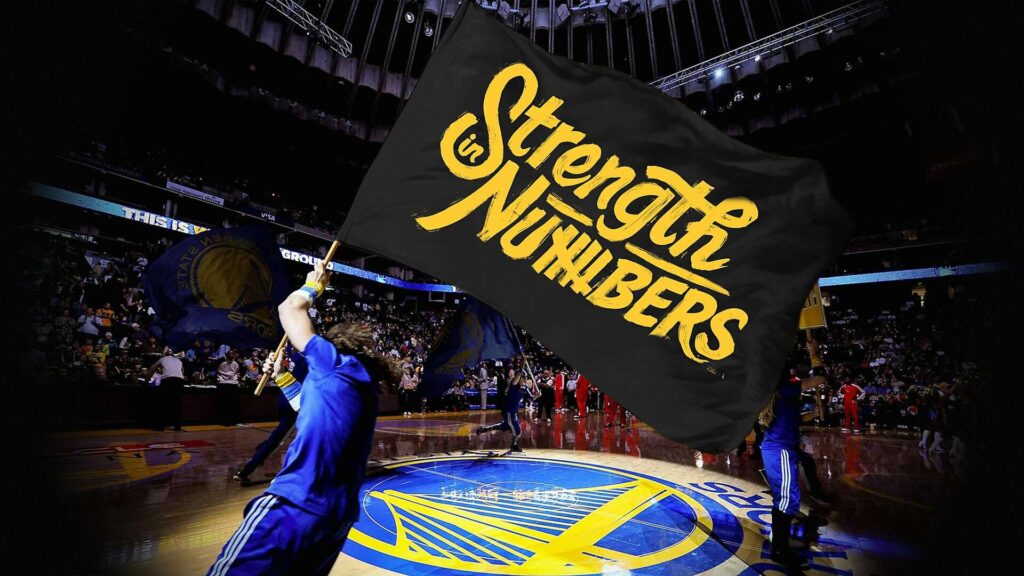
“Financial titans” Money does the talks! Golden State Warriors Top NBA Franchise Valuations at $9 Billion as League’s Average Team Value Reaches Unprecedented $4.6 Billion Amid Global Expansion and Media Revenue Growth…
The NBA has cemented itself as one of the most financially robust sports leagues in the world, with the average value of its franchises now soaring to $4.6 billion.
This represents a significant leap of 15% compared to the previous year and reflects the league’s growing global appeal, innovative business strategies, and increasing media revenues. At the forefront of this financial boom are the Golden State Warriors, the most valuable team in the league, valued at an extraordinary $9 billion.
Golden State Warriors: The Blueprint of NBA Success
The Golden State Warriors epitomize the modern NBA franchise, blending on-court excellence with off-court business acumen. Over the past decade, the Warriors have transformed from a middling franchise into a basketball dynasty and a global brand.
Key to this transformation has been their consistent success, driven by stars like Stephen Curry, Klay Thompson, and Draymond Green, as well as the vision of their ownership group led by Joe Lacob and Peter Guber.
The Warriors’ home, the Chase Center in San Francisco, has been a game-changer for the franchise. Opened in 2019, this state-of-the-art arena generates immense revenue from ticket sales, luxury suites, naming rights, and non-basketball events.
By positioning themselves in one of the most affluent markets in the world and embracing Silicon Valley’s technological culture, the Warriors have established a lucrative synergy between sports and business.
What Drives the NBA’s Soaring Valuations?
The NBA’s remarkable financial growth can be attributed to several key factors:
1. Broadcasting and Media Deals:
The NBA’s current media rights agreement with ESPN and Turner Sports brings in $2.6 billion annually. However, with the contract up for renewal in 2025, analysts project the league could secure a deal worth $75 billion or more over the next decade. This would drastically increase revenues for all 30 teams, further driving valuations.
2. Global Expansion:
The NBA’s international footprint continues to expand, with its games broadcast in over 200 countries. Regions like China, Africa, and Europe are critical growth markets.
Initiatives such as the Basketball Africa League and partnerships with Chinese broadcasters and tech companies bolster the league’s global appeal and revenue streams.
3. Star Power and Marketability:
Players like LeBron James, Giannis Antetokounmpo, and Kevin Durant are not just athletes but global icons. Their personal brands amplify the NBA’s reach, drawing in fans from all corners of the world and attracting lucrative endorsements and sponsorships.
4. Diverse Revenue Streams:
Teams are increasingly diversifying their revenue streams. Many franchises are investing in real estate projects around their arenas, creating entertainment districts that generate year-round income.
Partnerships with tech companies, cryptocurrency platforms, and sports betting firms have also opened up new financial avenues.
5. Fan Engagement and Innovation:
The NBA is at the forefront of fan engagement, leveraging digital platforms, social media, and augmented reality to connect with younger audiences.
Programs like League Pass and the integration of advanced analytics into broadcasts enhance the viewing experience, making the league more accessible and engaging.
The NBA in Comparison to Other Leagues
The NBA’s average team valuation of $4.6 billion places it among the world’s elite sports leagues. While it still trails the NFL, whose average team value is $5.1 billion, the NBA’s growth rate outpaces its competitors. In contrast, Major League Baseball and the NHL lag significantly behind in terms of average franchise valuations.
Challenges on the Horizon
Despite its impressive growth, the NBA faces challenges that could impact future valuations:
Economic Uncertainty: Global economic downturns could affect ticket sales, sponsorship deals, and merchandise revenues.
Competitive Balance: The disparity between big-market teams like the Warriors and smaller-market franchises raises concerns about competitive fairness.
Load Management and Fan Backlash: The practice of resting star players during the regular season has drawn criticism from fans and media alike, potentially impacting ticket sales and television ratings.
The Role of the Collective Bargaining Agreement (CBA)
The league’s financial structure, governed by the CBA, ensures revenue sharing and salary caps that help maintain competitive balance. However, with the league’s revenue skyrocketing, renegotiating the CBA to accommodate new financial realities will be critical. Owners and players must collaborate to distribute wealth equitably while maintaining the league’s competitiveness.
The Warriors’ Influence on the NBA’s Future
The Golden State Warriors have become a model for other franchises, showcasing how success on the court can be parlayed into business dominance. Their ability to leverage technology, innovate fan experiences, and capitalize on global markets sets a precedent for other teams aiming to maximize their value.
Moreover, the Warriors’ success highlights the importance of star players and a winning culture. Stephen Curry’s influence extends far beyond basketball, making him one of the most marketable athletes in the world.
The team’s embrace of analytics, player development, and progressive management has also cemented their status as a trailblazer in the modern sports era.
The NBA’s rise to a $4.6 billion average franchise value underscores the league’s position as a global entertainment powerhouse. The Golden State Warriors, with their $9 billion valuation, exemplify the intersection of athletic success and business innovation.
As the league continues to grow, the Warriors and other franchises will shape the NBA’s future, leveraging media rights, global markets, and technological advancements to drive unprecedented growth.
While challenges remain, the NBA’s trajectory suggests it will remain at the forefront of global sports, captivating audiences and investors alike.
The league’s ability to adapt, innovate, and embrace change ensures its place as a dominant force in the sports and entertainment industry for years to come.






